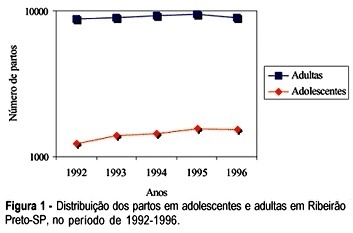Revista Brasileira de Ginecologia e Obstetrícia. 2004;26(8):633-639

PURPOSE: to check whether there were differences in some social indicators between adolescent and adult pregnant women in the city of Ribeirão Preto, from January 1992 to December 1996. METHODS: the information was obtained from hospital discharge forms and was analyzed at the Hospital Data Processing Center of the FMRP-USP. The analyzed parameters were: number and types of deliveries, category of hospital admission, occupation, and obstetric diagnosis. The 6.04a text processor Epi-Info System, a data bank and statistics of epidemiology produced by the Centers of Disease Control and Prevention (Atlanta, GA, USA), and Dbase IV were used to process the information. The association between variables was tested by the chi² test, with level of significance set at 5%, using the GraphPad Prism version 2.0, 1995 software. RESULTS: a total of 43,253 deliveries occurred during this period, among which 7,134 (16.5%) corresponded to adolescent deliveries, while 36,119 (83.5%) to adult deliveries. The number of deliveries by adolescent girls increased 25.5% along this period. The proportion of adolescent deliveries in the unified health system category of admission increased, and it was higher than that of the adults’. Only 14.1% of the adolescents belonged to the economically active population, comparing with 34.8% of the adults. Only 6.8% of the adolescents were students, while 79.0% were house-workers or had a nonpaid occupation. In the analyzed period, the ratio of vaginal delivery increased among the adolescents, as compared to that of the adults. The ratio of cesarean delivery persisted stable and higher among the adults. Premature delivery and false labor were significantly more frequent among the adolescents. CONCLUSION: the number of deliveries increased among the adolescents, and most of them were normal. The ratio of admission by the unified health system category and that of vaginal delivery were higher among the adolescents. There were more adolescents without an economically active work. Thus, we recommend strategies to prevent adolescent pregnancy, mainly among the poor population.
Search
Search in:


Comments